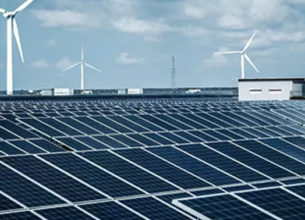Clean Energy
Clean Energy
Why in news?
- Recently, India’s financial sector is highly exposed to the risks of the economy transitioning from being largely dependent on fossil fuels to clean energy.
Highlights
- The financial decisions of Indian banks and institutional investors are forcing the nation to rely on a more expensive, more polluting source of energy. For example,
- Oil and gas extraction accounted for 60% of lending to the mining industry, while petroleum refining accounted for one-fifth of debt in the manufacturing industry.
- Only 17.5% of bank lending to the power sector has been to renewables.
- Consequently, India has much higher electricity from carbon sources than the world average, despite its vast potential for cheap solar, wind, and small hydropower.
- High-carbon industries – power generation, chemicals, iron and steel, and aviation – account for 10% of outstanding debt to Indian financial institutions.
- However, these industries are also heavily indebted and therefore have the less financial capacity to respond to shocks and stresses.
- Mapping India’s policy commitments against these lending and investment patterns reveal that India’s financial sector is heavily exposed to potential transition risks.
- A shortage of experts In India’s financial institutions who had the expertise to appropriately advise the institutions on such a transition.
- Trillion dollars needed: To meet net-zero and power generation from non-fossil fuel sources commitments.







